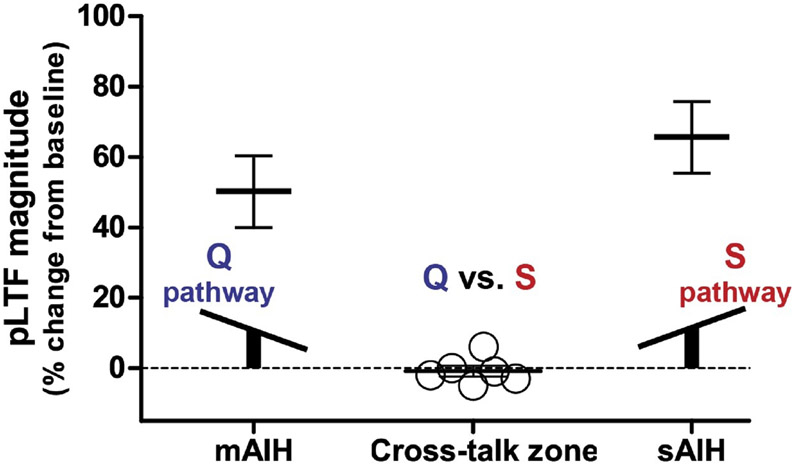Fig. 2.
Similar to a seesaw (see inset), moderate AIH (mAIH: 3, 5 min episodes; PaO2 = 35–45 mmHg) and severe AIH (sAIH: 3, 5 min episodes; PaO2 = 25–30 mmHg) elicit robust phrenic long-term facilitation (pLTF; Fuller et al., 2001; Baker-Herman et al., 2004; Nichols et al., 2012; Agosto-Marlin et al., 2017; Dale et al., 2017; Perim et al., 2018b), whereas intermediate AIH (i.e. 3, 5 min episodes; PaO2 = 30–35 mmHg) fails to elicit pLTF (open circles). These data demonstrate that pLTF is cancelled with intermediate AIH (i.e. balanced cross-talk inhibition; n = 6) versus robust pLTF with less (mAIH) or more (sAIH) severe hypoxic episodes. In this “cross-talk zone,” the Q and S pathways are activated equally, canceling phrenic motor plasticity due to balanced cross-talk inhibition.

